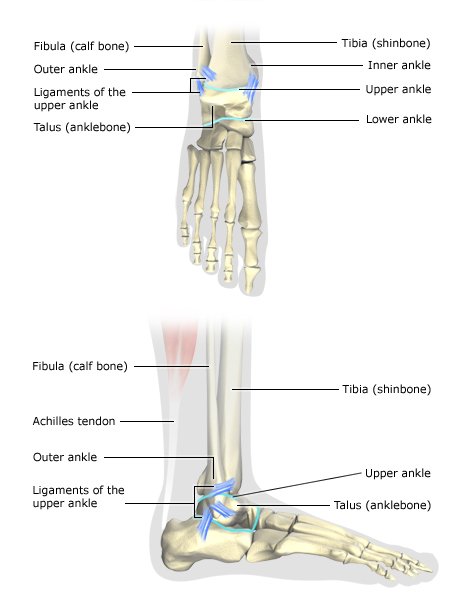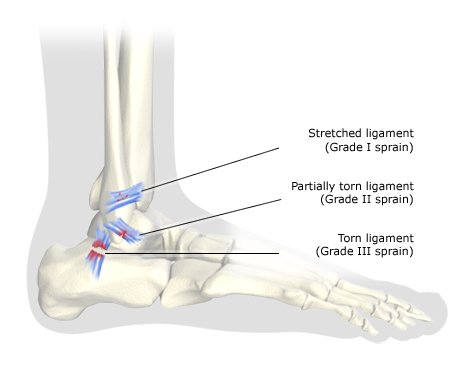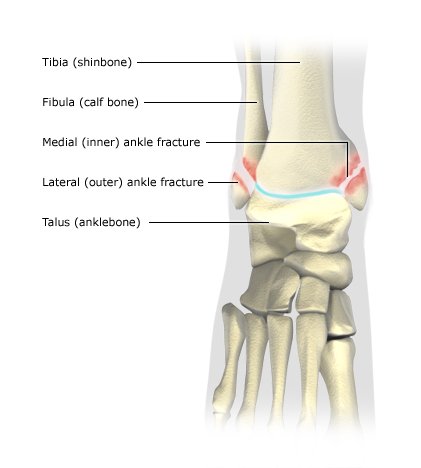How does the ankle work?
The ankle is the joint that connects the bones in the lower leg to the foot bones. It can be divided into two parts: the upper and lower ankle.
The upper ankle allows us to move our feet upwards, downwards, and a little to the side. It is made up of three bones:
- the tibia (shinbone): the main bone in the lower leg,
- the fibula (calf bone): a second, thinner bone on the outer side of the lower leg, and
- the talus (anklebone): the foot bone that connects to the shinbone and calf bone.
The lower ankle connects the anklebone to the bones in the tarsus (the midfoot and hindfoot) and the heel bone. It doesn't move as much as the upper ankle does. The lower ankle allows the foot to tilt to the side a bit and also turn inwards and outwards. Turning your foot outwards is known as pronation, and turning it inwards is called supination.



